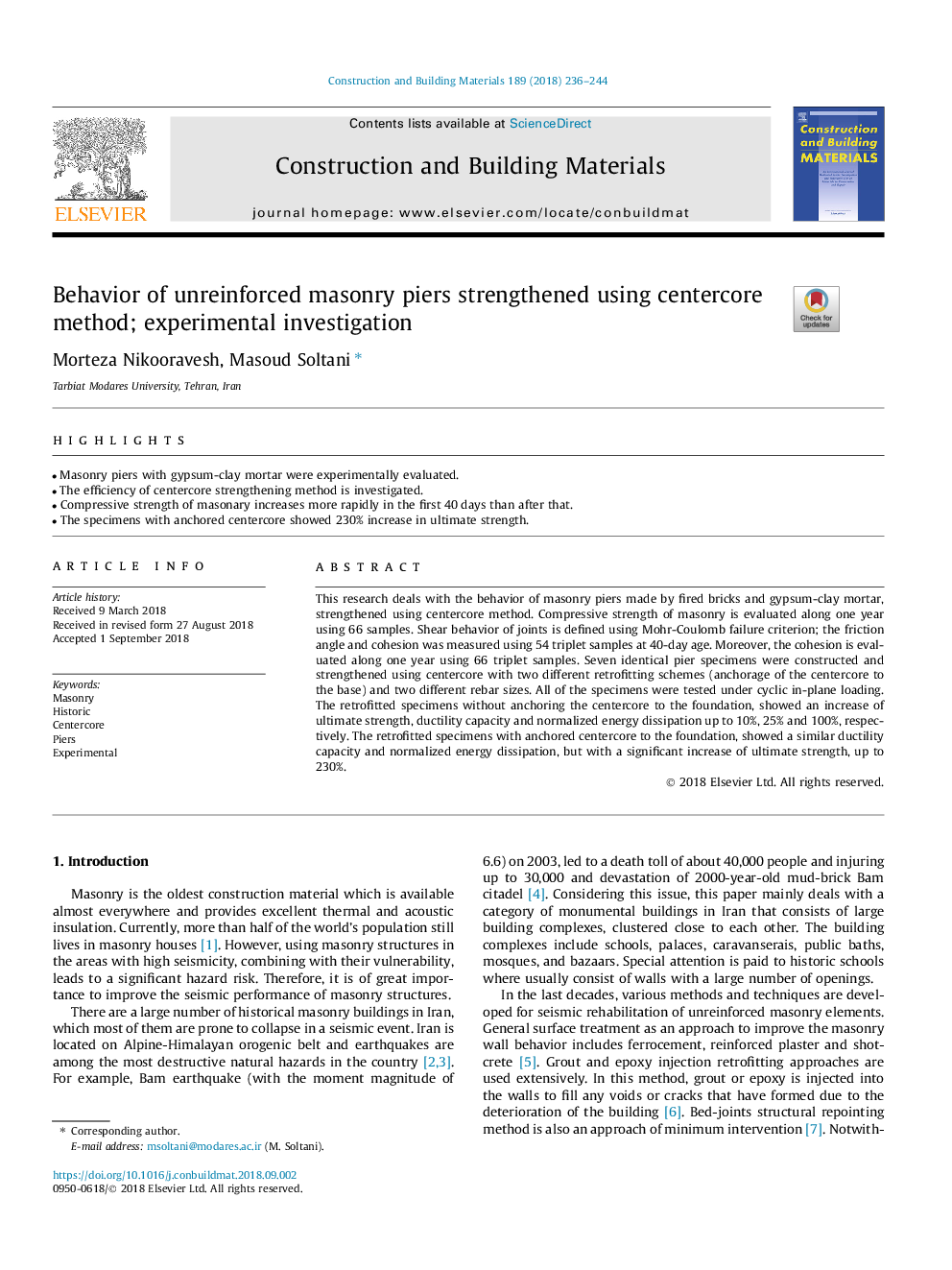| Article ID | Journal | Published Year | Pages | File Type |
|---|---|---|---|---|
| 8960012 | Construction and Building Materials | 2018 | 9 Pages |
Abstract
This research deals with the behavior of masonry piers made by fired bricks and gypsum-clay mortar, strengthened using centercore method. Compressive strength of masonry is evaluated along one year using 66 samples. Shear behavior of joints is defined using Mohr-Coulomb failure criterion; the friction angle and cohesion was measured using 54 triplet samples at 40-day age. Moreover, the cohesion is evaluated along one year using 66 triplet samples. Seven identical pier specimens were constructed and strengthened using centercore with two different retrofitting schemes (anchorage of the centercore to the base) and two different rebar sizes. All of the specimens were tested under cyclic in-plane loading. The retrofitted specimens without anchoring the centercore to the foundation, showed an increase of ultimate strength, ductility capacity and normalized energy dissipation up to 10%, 25% and 100%, respectively. The retrofitted specimens with anchored centercore to the foundation, showed a similar ductility capacity and normalized energy dissipation, but with a significant increase of ultimate strength, up to 230%.
Keywords
Related Topics
Physical Sciences and Engineering
Engineering
Civil and Structural Engineering
Authors
Morteza Nikooravesh, Masoud Soltani,
